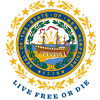Community Resilience
Resilience are those characteristic that help a person or a community to prepare, respond, and recover from severe weather or rapid change in a way that makes them stronger.
Our State’s People
New Hampshire has a very resilient population, with higher average education, income, and grit that helps them adapt to a changing climate. Yet, even the most resilient communities and places have vulnerable populations due to disparities with income, housing, behaviors, substance use, and other social or demographic factors.
Response Agencies
Since the events of 9/11, our front-line response agencies are much more resilient, with better funding and coordination across military, police, fire, EMS, and public health. Individual citizens need to learn how to be more resilient, especially when emergency services aren’t available. As we address climate change, all community sectors need to become more resilient – including work, school, and healthcare facilities.
Measuring Vulnerability
The Social Vulnerability Index (SVI) is a web-based tool that allows users to examine which communities may be most vulnerable to external stressors such as floods, forest fires, power outages and winter storms. You can use it to map and identify areas that are more vulnerable or more resilient to extreme weather.
Building Resilience
The Monadnock Region in Southwest NH has experienced more-than-its-share of flooding and severe weather over the past few decades. The NH DHHS and partners have launched a project to improve emergency preparedness and build community-level resilience to extreme weather events via efforts based on original research. Social cohesion is a key factor to improved resilience, yet we are only now learning to measure and improve our connections.



